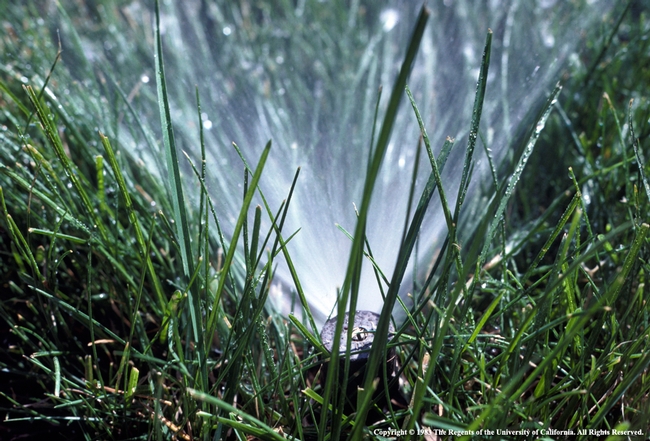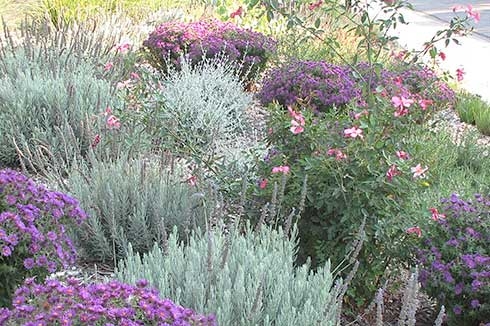[From the August 2015 issue of the UC IPM Green Bulletin]

A. Landscape irrigation accounts for only about 9% of total statewide developed water use, but the percentage varies widely among communities. Water applied to landscapes is estimated to account for about 50% of residential water consumption statewide, but the amount varies from about 30% in some coastal communities to 60% or more in many inland suburban communities.
Q. Does a landscape have to be re-planted with specific drought resistant, native, or California- Friendly plants to save significant amounts of water?
A. No. Field research studies indicate that traditionally used landscape trees, shrubs, and groundcovers have considerable drought resistance and perform acceptably with about 40% to 60% of the water required to maintain the average lawn in good condition. This is comparable to the water required by so-called drought resistant, California Friendly, and native plants to perform acceptably in landscapes. The common perception is that plants traditionally grown in landscapes are not drought resistant, so they are usually over watered.
Q. How much water can be saved by removing a lawn?
A. Water savings depends on how effectively the lawn has been irrigated, the type of turfgrass removed, which plants and how many will replace it, and how effectively the water applied to new plants is managed. If a lawn is removed and plant material is changed but the irrigation system and water management practices are not improved, then little water savings will be realized. If the lawn has been over watered and irrigation was poorly managed, then maximum water savings are possible by removing the lawn. However, in such situations keeping the lawn and simply improving irrigation management and improving or replacing an inefficient irrigation system will also generate substantial water savings without the trouble, cost, and the loss of aesthetics and functions that occur when removing the lawn.

A. As with lawns, it depends on the amount of water currently being applied. Plantings that have been maintained with high soil moisture content can usually maintain acceptable performance with a 20-40% reduction in irrigation by extending the interval between thorough irrigations as described above. Additional 10- 20% irrigation reductions to theses plantings or to plantings that have already been irrigated below optimum will usually allow plants to remain functional, but they will grow less, possibly wilt and drop some leaves. It is important to gradually reduce water over a few to several week period by extending the interval between irrigations and applying enough water to wet most of the root system at each watering.
A few deep, root-zone wetting irrigations spaced 3 to 6 weeks apart from spring through fall can be enough to keep most trees and shrubs alive when water is in short supply. Many tree and shrub species will drop leaves, wilt, or suffer dieback of some branches under severe water shortage, but will survive.
Q. When should trees, shrubs, and other landscape plants be planted in a dry year or if drought is expected?
A. Hold off planting until fall or winter to take advantage of cool weather as well as fall and winter rains. The planting site may be prepared in spring or summer, however.
To access this article in it's entirety, see the August 2015 issue of UC IPM's Green Bulletin or visit the UC Center for Landscape and Urban Horticulture
- Dennis R. Pittenger, Area Environmental Horticulturist, UC Cooperative Extension Los Angeles County/UC Riverside, dennis.pittenger@ucr.edu